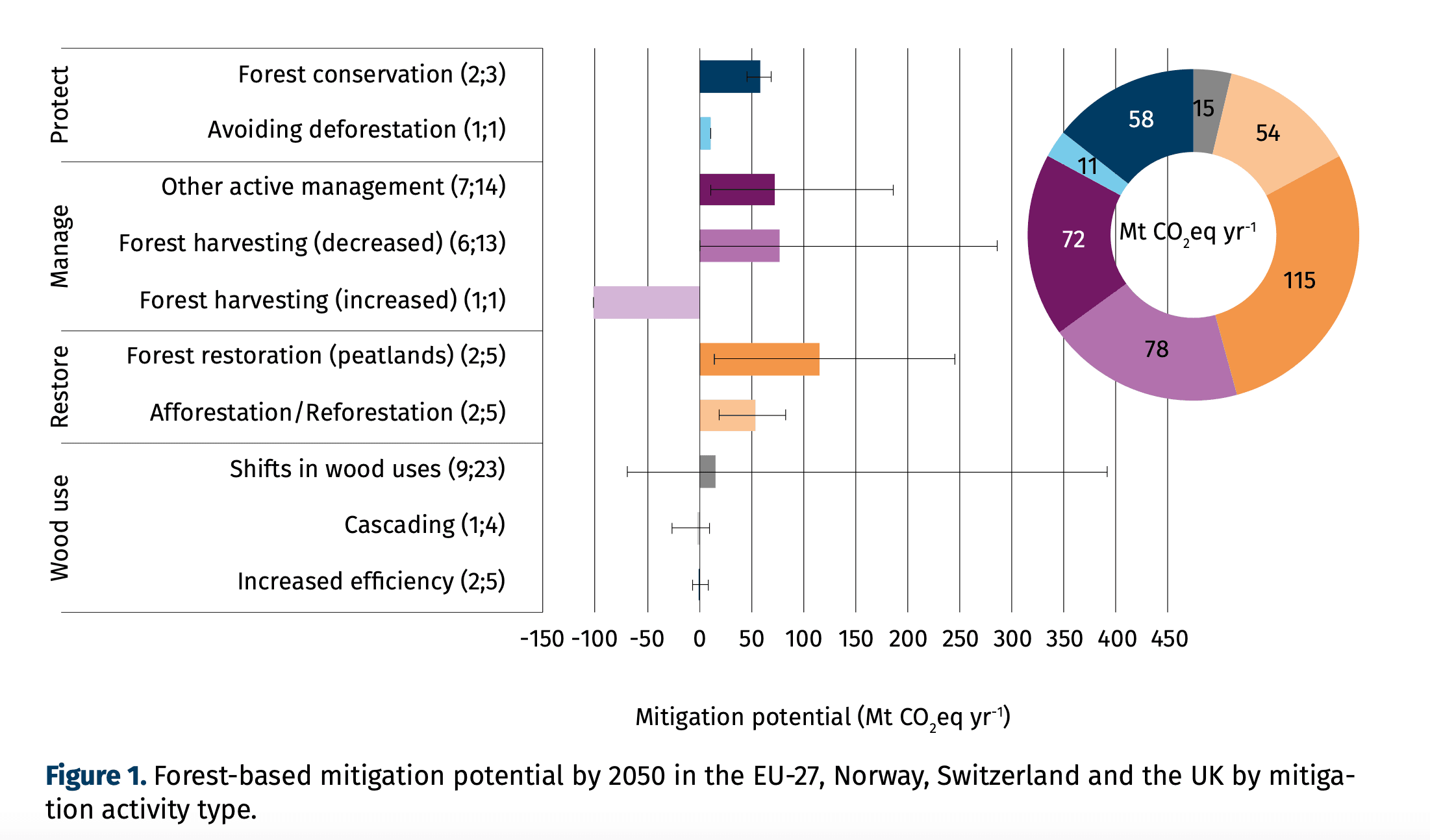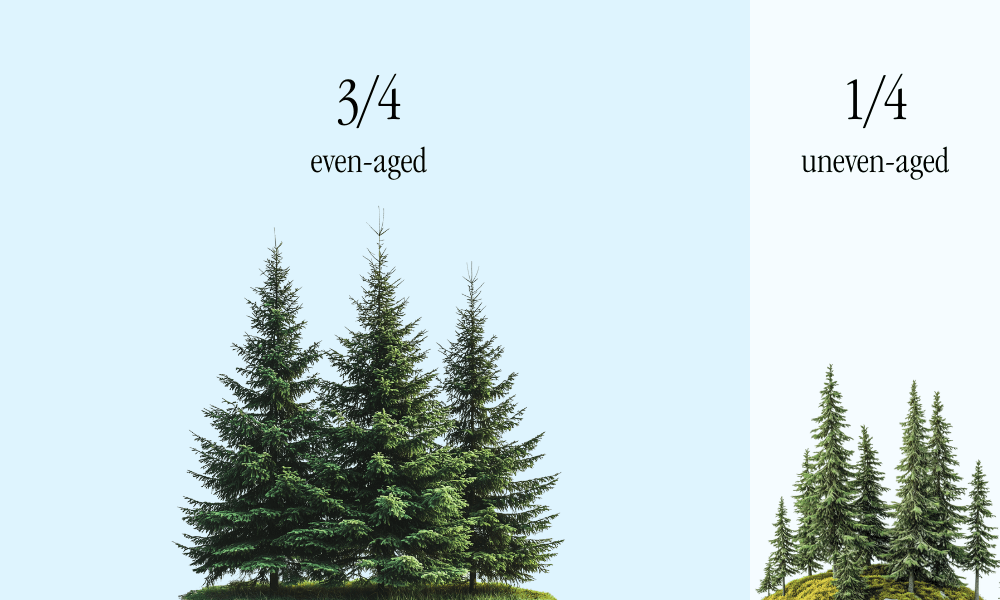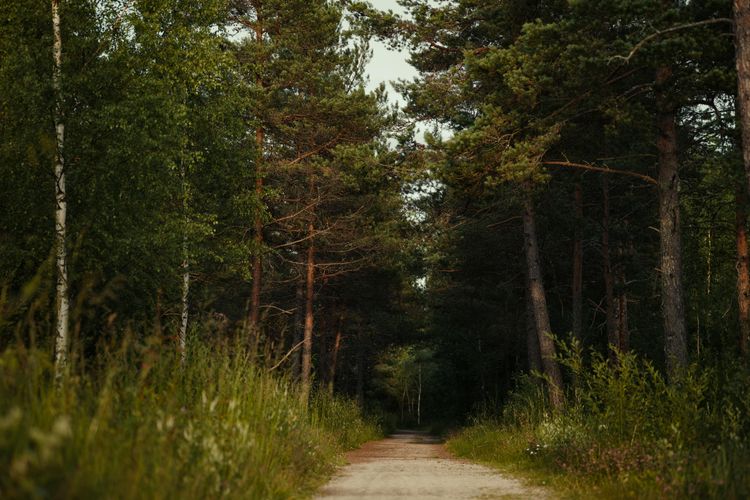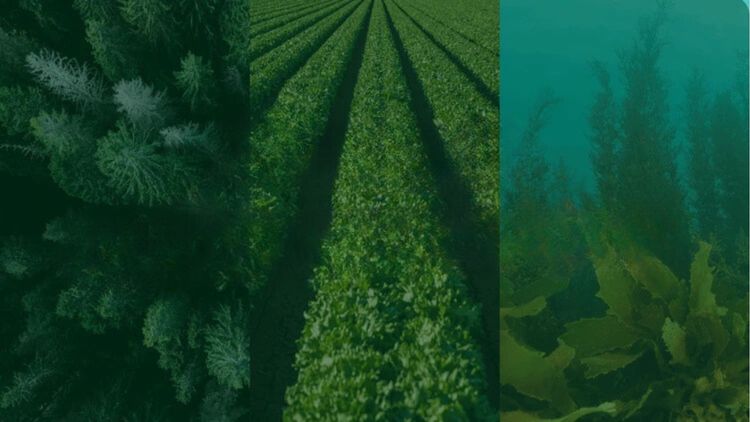Ingeborg Mägi, Head of Impact Forestry
Rethinking forest management: The story of Impact Forestry
Key takeaways
- Europe’s forests are facing climate-change-induced risks, which undermine their ability to store carbon and support biodiversity.
- Impact Forestry provides landowners with a profitable alternative to clear-cutting, helping to create resilient forests that can realise their full carbon sequestration potential.
- With data-driven insights, Arbonics enables landowners transform forests into resilient ecosystems that combat climate change.
As climate change intensifies, the need for effective mitigation and adaptation strategies is more pressing than ever. At Arbonics, we are particularly inspired by the climate mitigation potential of European forests.
Nature-based solutions could deliver as much as 5 gigatonnes, or 5 billion tonnes, of carbon removal and reduction by 2030. Among these, improved forest management and conservation could sequester 208 million tonnes of carbon by 2050.
With our newest product Impact Forestry, our goal is to tap into the climate mitigation potential of forest conservation and sustainable management, to create resilient forest landscapes where biodiversity and carbon are managed in a balanced way.
 Figure 1: Forest-based climate mitigation potential (Mt CO2eq yr-1) by 2050 in the EU. Source.
Figure 1: Forest-based climate mitigation potential (Mt CO2eq yr-1) by 2050 in the EU. Source.
The need for resilient forest ecosystems
Today, both the health and carbon removal rate in European forests is declining due to an increase in wood demands, natural disturbances, and shares of forests reaching maturity.
To put it into perspective: about three-quarters of forests in Europe are even-aged, and 33% of the forests are composed of stands dominated by single tree species– either monocultures or naturally homogenous forests. This makes them significantly more vulnerable to wind damage, heat waves, extensive bark beetle outbreaks, and forest fires.
As climate change worsens, large-scale disturbances like these become more frequent, making Europe’s forests even less equipped to withstand these challenges.
This leaves us with one option: we must create resilient forest ecosystems that can realise their full carbon sequestration potential and withstand the risks brought about by climate change.
 Figure 2: Three-quarters of forests in Europe are even-aged
Figure 2: Three-quarters of forests in Europe are even-aged
Why we created Impact Forestry
Given these vulnerabilities, it’s clear that we need to rethink forest management. Forests cover approximately 39% of the EU’s land area, and without viable alternatives for landowners, traditional forest management will continue to undermine forest resilience.
That’s where Impact Forestry comes in.
Impact Forestry is a solution that rewards landowners for adopting Improved Forest Management (IFM) practices. These strategies focus optimising rotation cycles, adjusting harvesting practices, and cultivating uneven aged and structurally diverse forests. In doing so, we enhance a forest's capacity to store and capture additional carbon while creating the necessary conditions for biodiversity to thrive.
Data-backed insights to identify forest types suitable for carbon projects
We combine data, science and local forestry expertise to assess a forest's suitability for climate mitigation. Together with data scientists and local forestry experts, we spent nine months developing our advanced technological solution that assesses how a specific forest plot will perform over time in terms of carbon storage and sequestration potential.
We learned that not all forest types are suitable for long-term carbon projects. Certain forest types are at high risk for pest damage, while others will degrade over time if left unattended and thus are better harvested today.
However, we also learned that several forest types in our region can play a crucial role in climate mitigation and enhancing biodiversity— if given the opportunity to do so.
Private landowners are key players in the climate response
While technology and science drive our approach, the key to success lies in empowering those who manage the land—private landowners. Approximately 60% of Europe’s forests are privately owned, making landowners key stakeholders in the effort to combat climate change.
Through Impact Forestry, we empower landowners with:
- Economic incentives to adopt planet-friendly practices
- Detailed land analysis to tap into the full potential of their forests
- Actionable strategies that balance economic needs with climate goals
 Figure 3: Arbonics’ Carbon Opportunity Assessment tool helps landowners assess their forest's suitability for an Impact Forestry project.
Figure 3: Arbonics’ Carbon Opportunity Assessment tool helps landowners assess their forest's suitability for an Impact Forestry project.
Dive into this article for an overview of our landowner-facing technology.
Having reached over 6,000 landowners, we are helping transform European forests into resilient ecosystems and key players in the climate fight. If you’d like to find out more about how you can partner with us on an Impact Forestry project, please fill out this form and we’ll be in touch.
Arbonics connects landowners and credit buyers at scale to remove carbon and protect biodiversity through data-backed forestry solutions.
Our leading technology finds the best strategies to maximise carbon removal, allowing us to offer two solutions to landowners: Afforestation for planting new forests, and Impact Forestry for improved forest management.
We provide credit buyers with high-quality carbon credits from these projects to support your positive environmental impact. Our solutions are backed by advanced technology, deep forestry expertise, and the stringent forestry regulations of the EU.
Interested in buying credits? Introduce yourself here and we will be in touch! Follow us on LinkedIn, Facebook, and Instagram for latest news.


